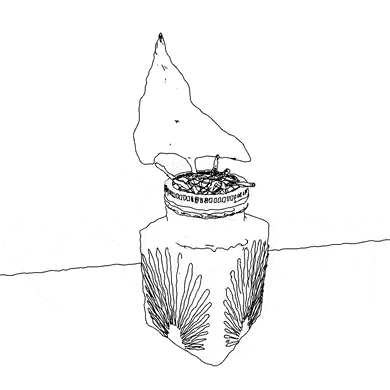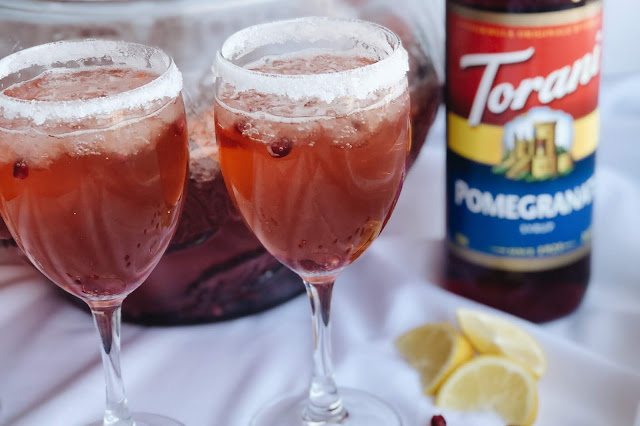
 Brain injury is more pervasive and problematic than many people think. Every day, about 150 people die from traumatic brain injury-related deaths in the US alone, and whether you participate in a contact sport, work in the military, or simply travel on roads, you may at some point suffer the kind of event that incites brain injury. Even falling over can lead to brain injury in frail people, and if you’re pregnant then complications can lead to brain injury to the little person inside you.
Brain injury is more pervasive and problematic than many people think. Every day, about 150 people die from traumatic brain injury-related deaths in the US alone, and whether you participate in a contact sport, work in the military, or simply travel on roads, you may at some point suffer the kind of event that incites brain injury. Even falling over can lead to brain injury in frail people, and if you’re pregnant then complications can lead to brain injury to the little person inside you.
Why does this all matter?
Brain injury is associated with numerous negative health consequences, including mental health issues and diseases such as Parkinson’s.
Fortunately, there are things that we can do to help us protect against the negative consequences of brain injury. There are good reasons to think that we may benefit from using exogenous ketones for brain injury, for example (check out this podcast for more on the benefits of ketone supplementation). This brings us to the latest episode of humanOS Radio.
Guest
In this episode of humanOS Radio I speak with Dr. Tommy Wood. Tommy is Senior Fellow in the Pediatrics Department at the University of Washington, Visiting Research Scientist at the Institute for Human and Machine Cognition, Chief Scientific Officer of Nourish Balance Thrive, and President of Physicians for Ancestral Health. Tommy’s academic work focuses on neonatal brain injury, and in the years to come he plans to study how to manipulate diet to minimize the negative effects of such injury.
In this podcast we explore many subjects, including:
- The number of people affected by brain injuries

- Which groups of people are at highest risk of brain injury
- Whether the time of day at which brain injuries take place influences subsequent injury severity
- How early-life brain injury affects risk of disease later in life
- The treatment of brain injury in newborn kids
- What pregnant women can do to protect the foetus against brain injury
- How dietary fat composition affects risk of brain injury
- Whether creatine monohydrate can help protect athletes against concussion
- Using exogenous ketones for brain injury
- And more!
Do ketones protect against brain injury? Check out this podcast with @DrRagnar for more!
Click To Tweet
Listen here
On Soundcloud, iTunes, Google Play, Stitcher, and YouTube
Youtube
Support
Have you considered becoming a Pro member of humanOS.me? It costs just $9.99 per month, and when you go Pro, you get access to all our courses, tools, recipes, and workouts. Pro members also support our work on blogs and podcasts, so thanks!
Leave a review
If you think other people would benefit from listening to this show, you can help us spread the word by leaving a review at iTunes. Positive reviews really help raise the profile of our show.
Transcript
| Tommy Wood: | 00:05 | One of the reasons why we can have such metabolically-demanding brains, which we do, compared to most other species, is largely because of our ability to produce ketones and support our brain function and brain development, regardless of the state that we’re in. |
| Kendall Kendrick: | 00:20 | humanOS. Learn. Master. Achieve. |
| Greg Potter: | 00:34 | Welcome back to humanOS Radio. My name’s Greg Potter, and I’m hosting the show once again. |
| Today I’m joined by one of England’s and Iceland’s favorite sons, Doctor … and soon to be Professor … Tommy Wood. | ||
| Tommy is senior fellow in the pediatrics department at the University of Washington, visiting research scientists at the Institute for Human and Machine Cognition, chief scientific officer of Nourish, Balance, Thrive, and president of Physicians for Ancestral Health. | ||
| Were that not enough, Tommy got a double first from Cambridge, and for anybody unfamiliar with the education system in England, this means he’s probably quite smart. | ||
| With all of that said, Tommy is probably best known for being 2013 British Powerlifting Organisation Novice Push-Pull champion in his weight class. So in the highly-improbably event that Tommy isn’t smarter than you, be nice to him, because he can probably still beat you up. | ||
| Tommy, welcome to humanOS radio. | ||
| Tommy Wood: | 01:24 | Greg, thanks for having me, and thanks for reading all the way to the end of my CV. I don’t think anybody’s ever done that before. |
| Greg Potter: | 01:30 | Tommy, something I appreciate about you is the breadth of your interests in health and performance. So far, your research has largely focused on neonatal brain injury, though. What piqued your interest in this topic? |
| Tommy Wood: | 01:41 | That’s a really good question. It’s kind of a matter of serendipity. |
| When I was an undergraduate at Cambridge, one of my advisors suggested I get a Welcome Student scholarship, where basically the welcome trust gives you some money to do some research in a lab just to get a feel for what it’s like. | ||
| When I was looking at where I could do that, my mum didn’t really want me to be away from home for the whole summer, so she looked for labs … we were in Bristol, which is where I grew up in the UK … A friend of hers was a professor in neonatology at the University of Bristol, and she asked her if she’d be willing to take me into her lab for a summer, and [Marianna Torrison 00:02:17] who later became my PhD supervisor, basically gave me a spot in her lab because she liked my mum. | ||
| I got the Welcome scholarship, and I did a summer of work in that lab, and then came back the next summer and then they paid me to work in the lab. Then, after I finished medical school, a few years later, I met Marianna again, and she at this point had moved back to Norway, and said, “Well why don’t you come to my lab and do a PhD?” And I hadn’t really figured out what I was gonna do next. | ||
| The way training works in the UK, medical training, is that after you finish medical school, you spend two years rotating around various departments. It’s called “foundation training,” as it was slightly different from the internship and residency that you do in the US. | ||
| So I’d done a lot of internments and emergency meds and some surgery and things like that, and wasn’t really sure what I wanted to specialize in, so I figured being off at a PhD in Norway will be an adventure. So that’s what I felt like doing, and that’s what I ended up doing, and that lab focuses on neonatal brain injury, particularly injury in infants who go to full terms … they go to 36 to 40 weeks of gestation, as we like to measure it … and then something happens. Usually during birth, but there may have been some issue that wasn’t picked up during the later parts of the pregnancy. | ||
| Then when they’re born, they have some kind of brain injury that then needs to be treated, so we’re modeling that in the lab, and ways to treat that in the lab, as well as working with some data from human patients. | ||
| Then, from there, as you learn how the brain develops, the important parts of brain development, the important parts of brain resilience to injury, and the other half of my work is working with athletes, but I also have connections to institutes that work with the military, like the IHMC, and you realize that all of these things are potentially interconnected in that where a lot of my future work is hopefully going is how different insults and different factors that affect your resilience or susceptibility to brain injury interact over a whole lifetime. Because what we often focus on is just the one thing in front of us, and maybe the risk factors that exist at that time, but maybe there are these things that happened much earlier in life that are also gonna be playing a big part, and that’s just something that we really need to start teasing out. | ||
| Greg Potter: | 04:12 | You mentioned the athletes and military there. Who’s at particular risk of brain injury, and why should our listeners be interested in both developmental and adult brain injury? |
| Tommy Wood: | 04:22 | Pretty much because brain injury could happen to anybody, and that doesn’t mean that we should all be terrified that it’s gonna happen to us at any moment, but if you think about the three areas of brain injury that I currently research, the first one is preterm brain injury. That’s something that I’ve been working more on since I moved to the US. 10% of births in the Western world are premature, and not everybody gets a direct brain injury as the result of that, but in the long term, we know that people who are born prematurely have an increased risk of cardiovascular disease, diabetes, obesity, potentially Alzheimer’s disease, Parkinson’s disease. |
| Early in life, these things that are happening either then cause you to be born prematurely, or because you’re born prematurely, then increase your risk for a number of the chronic diseases that are affecting everybody, including diseases of the brain. | ||
| The disease process that I studied during my PhD, paranasal asphyxia or hypoxic ischemic encephalopathy, which happens in these term babies just after they’re born, or around … that happens in about half a percent of births in the Western world, and then maybe one in a thousand babies actually need active treatment for quite severe brain injury. | ||
| That doesn’t sound like very much, but in the US, if you have four million births a year, that’s four thousand babies a year that need to be treated for this. | ||
| And then if you expand this worldwide, so if you’re worried about the global burden of disease and thinking about … in the developing world, or low-resource settings, that disease process accounts for almost 10% of all childhood deaths. So it’s a huge burden of disease. | ||
| And then if we go into the adult, so talking about traumatic brain injury and concussions, there are about three million visits to the emergency department in the US each year with some kind of traumatic brain injury, and that doesn’t include several million concussions that are happening, particularly in sports. There was a paper that came out that estimated that two and a half million high school kids in the US last year had some kind of concussion, mainly related to sports. | ||
| But then also, as you go through your lifetime, so particularly when you’re younger, and then when you’re older, falls are very common, and that’s one of the main contributors to having a traumatic brain injury. | ||
| Then also, things like, motor vehicle accidents, particularly in young people, so young adults, that’s the commonest cause of a severe traumatic brain injury. | ||
| So this is happening all the time to millions of people. That’s why we should care about it. It’s probably happening to people you know and love. We’d go back to the HIE problems around birth. I know two people who’ve had very traumatic birth experiences. Unfortunately, both of their babies died, but they would’ve been in that category of the brain injury that I was trying to research doing my PhD. And I don’t know that many people who’ve had babies. | ||
| It is quite common. You probably know somebody who’s been affected by this, and then particularly if you’re talking about concussions and traumatic brain injury, again, I imagine most people know somebody who’s had a few concussions, and maybe a scientist sees some of [inaudible 00:06:51] problems associated with that. | ||
| Greg Potter: | 06:53 | That’s a very comprehensive OV. Unfortunately, many people sustain concussions at night. Just think of boxers who compete in the wee hours of the morning. |
| Our bodies’ biological clocks have many roles in regulating brain biology according to time of day. Do we know anything about the effects of timing of brain injury on subsequent pathology? | ||
| Tommy Wood: | 07:11 | Yeah, that’s a really good question, and the answer is, I don’t think we know very much about it, in terms of the actual outcomes in humans, but there’s a lot of data that would suggest that it’s important. |
| One of the things that I research in the lab is various types of cell death. So if you get punched in the head, or you’re in a car crash, or you have a traumatic birth, there are probably gonna be some cells in the brain that die. | ||
| When I was an undergraduate, there were two types of cell death. There was apoptosis and necrosis, which people might recognize. Apoptosis was thought to be regulated cell death where the cell packs itself in, and it’s quite a nice, orderly process, and then there’s necrosis, where the cell bursts open and spills a whole mess of crap everywhere, and then there’s a big inflammatory response. | ||
| Now there are 20+ different types of cell death when looking at the brain, and some of the things that regulate those … some of the molecules and enzymes that underpin some of that … we know that they are affected on a Circadian rhythm. | ||
| Two examples are, parthanatos, which is triggered by, or associated with, and enzyme called Poly (ADP-ribose) Polymerase, which basically consumes NAD. | ||
| Some people may have heard of NAD, which is our universal electron acceptor and donor in the cell. It allows us to move electrons around into the mitochondria to use in the electron transport chain, to then use energy. When you get some kind of injury and you have to repair DNA, then this enzyme chews up your NAD as part of that process, so you lose NAD, and that basically means that you have no ability to move electrons around the cell, no ability to activate certain enzymes that are important for regulating certain cellular activities, and then that triggers a pathway to cell death. | ||
| And then, another one is something called thyroptosis, where basically you deplete cellular glutathione, the main antioxidant inside the cell, and then that causes peroxidation or oxidative damage to the lipids in the cell membrane, and then that triggers cell death, too. And glutathione reductase, some of the enzymes that recycle glutathione, other antioxidant enzymes, they peak in the morning. Melatonin is neuroprotective and antioxidant, and that peaks at night, but also, you see increased lipid peroxidation. Then the production and recycling of NAD seems to be particularly up-regulated at night, so you may have more of that available at night than you might do during the day. | ||
| When you put all of that together, you think that, depending on the type of cell death, depending on the injury, depending on which cells, you’re likely to see a different outcome, because the availability of all those things is going to change throughout the day. | ||
| With all that being said, we don’t really know how that currently affects [inaudible 00:09:28] in humans, but it may also affect how we translate therapies to humans. So we’re studying things in a lab with the eventual hope that that will translate to a therapy for humans. | ||
| The best way to do that is to try, in lots of different animal models of the same disease, in lots of different species, and then, if something works across all of those species, it’s much more likely to work in humans as well. | ||
| The neonatal brain injury field is much better than the adult brain injury field, so for neonatal brain injury, things are studied in mice, rats, non-human primates, piglets, sheep, and ferrets. If something works across all of those species, then we’re very confident that it’s likely to work in humans. | ||
| However, in adult brain injury research, often you just do stuff in rodents, and then hope that it translates up. Most of the time, it doesn’t, and part of that may be because if you’re doing most of your work in rodents, you’re initiating a brain injury, usually during the day, in a nocturnal species, then you’re treating them during the day in a nocturnal species. This whole time, you’re basically messing with their Circadian rhythm, forcing them to be awake usually during or around the injury and during treatment, which isn’t something that the human would experience. If you’re [inaudible 00:10:32] animal, then the injury and the treatment is likelier to occur during your awake period, rather than during your asleep period. | ||
| So all of these things are gonna play into it, but we just haven’t spent enough time looking into exactly how all that plays out. | ||
| Greg Potter: | 10:43 | Moving back to early life exposures, does early life brain injury potentiate the risk of later brain injury? |
| Tommy Wood: | 10:51 | This is something that I’m really interested in, and the answer is, I don’t know, but maybe. |
| We know that early life experiences, inflammatory responses, some kind of hypoxic or ischemic brain injury … hypopexy being the lack of oxygen to the brain, ischemia being lack of blood flow to the brain … we know that these cause epigenetic changes. You can start to look at certain immune cells, how their methylation patterns change, or gene expression patterns change, and how long does that stay for, how does that then affect your risk of later brain injury. | ||
| So, say, if you’re somebody who’s born prematurely, who then gets in a car accident, are you then at a greater risk of a poor outcome. And the answer is, we don’t know. ‘Cause there’s also the potential that you could be preconditioning. Usually preconditioning happens over a shorter time period, but that’s basically the process whereby if you give somebody a small insult … so, say, if you give an animal a short period of hypoxia, if you then give them a stroke a day later, they’ll have a smaller stroke, because their body is preconditioned to that injury. | ||
| So when something happens earlier in life, how it then affects later life is increasingly being studied, but usually on a shorter time scale, so what then happens if that injury is separated by months or years, is something that we just need to start looking at. | ||
| Greg Potter: | 12:00 | What I was gonna ask you about next is the role of epigenetics in programming. So thinking beyond the life of a single individual, since [David Barker’s 00:12:08] seminal research, many studies have explored whether stresses experienced by one generation are transmitted to subsequent generations. |
| So for example, whether children born to parents who survived a famine are programmed to store body fat more readily in anticipation of times of scarcity, but I don’t suppose that we’d know much about intergenerational consequences of brain injury then. | ||
| So for example, might a father’s concussion influence his son’s health? | ||
| Tommy Wood: | 12:32 | Yeah, that’s, sadly, not something that we know about. |
| Some of those early life stresses, particularly dietary interventions, are things that have been somewhat studied in the lab. | ||
| Talking about survivors of the Holocaust or famines in Europe, and then the offspring of those people. You talked about risks of obesity, there’s also some increased risk of mental health disorders … depression, anxiety … and you definitely see some of that in lab animals, too. | ||
| When we’re looking at animals, you can give the archetypal high-fat diet, which is basically a combination of soy bean oil and sucrose … so it’s basically the cheesecake diet … and then if you feed that to the mother, then that increases the risk of brain injury in the infants, and also increases the risk of patterns of cardiovascular disease and obesity, and that can go down at least two or three generations. | ||
| So all of this stuff is likely to be interconnected. If you’re talking about whether a father’s traumatic brain injury or concussion then effects the later offspring, that would probably depend on a whole host of environmental factors. The extent of the inflammatory response, the brain to the testes, what’s the message gonna be there? It’s gonna be systemic inflammation, which is a big part of a response to a traumatic brain injury. Is it going to be changes in hormonal signaling? So we know that in people with multiple concussions, they have an increased risk of hypopituitarism, which basically means that their pituitary stops sending out the messages to the thyroid and the adrenal glands, and the gonads, which then might affect the way that sperm are produced, or the general health of those cells, because the hormonal environment isn’t’ right. | ||
| So you could certainly hypothesize these will have an effect, but again, because of the heterogeneity of patients who have these injuries, and the fact that if you’re talking about concussions, most people who have a concussion don’t ever go and see a doctor, so we don’t know most of the people that are having these issues, so then tracking whether they have problems with their offspring later on is gonna be much harder. | ||
| Greg Potter: | 14:12 | Let’s pivot to your own research. |
| Since 2010, the standard of care for human babies with brain injuries has been to reduce core body temperature for three days. Can you tell us about how this protocol came about, what your doctoral work found, and some of the ways by which hypothermia might be neuroprotective? | ||
| Tommy Wood: | 14:29 | Yeah. So hypothermia as a therapy came about, at least in part, due to the work of my PhD supervisor, and then also a number of international collaborators. |
| There’s some evidence going back hundreds of years, actually, looking at the ability of cooling the have a protective effect on the brain. There’s this anecdote … I think it was some time in the 18th century … of a baby being stillborn, and the physician’s assistant takes the baby out and there’s a frozen bucket of water outside, dunks the baby in, and then it wakes up and everything’s fine. | ||
| And then you fast-forward 200 years, into the middle of the 20th century, and a Swedish version called [Bjurnvesteen 00:15:02] did something very similar. So with asphyxiated babies, or babies who appeared to have been stillborn, they weren’t breathing at birth … he would put them in ice water and basically, until they woke up, were resuscitated, and then he would remove them from the cold water and just let them warm up at the speed of their own metabolism. | ||
| And he had one case series of ten, another case series of 20-something babies. He had fabulous outcomes, considering the fact that these babies would probably just sort of been left to die otherwise. | ||
| And then we move into the ’90s. They were looking at the effects of hypothermia on brain injury, so again, one group were looking at this in the fetal sheep, one in piglets, and basically you initiate a brain injury by cutting off blood supply and oxygen to the brain for a period of time, and then the animal is resuscitated, and then cooled down, and the current standard of care is to cool down to 33.5 degrees Celsius core body temperature for three days. And that was developed in the sheep by [Alistair Gunn 00:15:57] who’s a researcher in New Zealand, and then that’s been recapitulated in piglets, and then the lab I worked in did a lot of— | ||
| Tommy Wood: | 16:00 | … and recapitulated in piglets, and then the lab I worked in did a lot of work in the rat model, so that’s where I focused my PhD. |
| And when I was coming into my PhD, there was this big question, if some cooling is good, is more better? That’s always what we think, that more is always better, so there was a clinical trial protocol being run in the US, where they were comparing the standard of care, so 33.5 degrees Celsius for three days, to a group that got longer cooling, so for five days, and who got deeper cooling, to 32 degrees Celsius, and then also a combination of both, so it was a four group design, compared to the standard of care. | ||
| And I saw that this trial was happening, but if you look at the research in animals, there’s great research to support the initial hypothermia protocols. There was very little to suggest that more cooling was better, so one of the first things that I did in my PhD was to ask that question. And it’s much easier to do that in rats than it is in humans, you can do it much faster. | ||
| What I found out was that more cooling isn’t necessarily better. In some cases, depending on the depth of the cooling, it can actually make the injury worse. And again, the same thing was found in both piglets and sheep and then surprise, surprise, it came out that the trial was stopped at the halfway point because the longer and cooler therapies just weren’t where there was a potential that, if they continue the trial out to the full number of 700 and something babies that they were going to recruit, that may have actually been detrimental, to do longer and deeper cooling. | ||
| And so that was a big part of me realizing the importance of animal research. If we had done those studies in the rats, and the piglets, and the sheep first, the NIH wouldn’t have had to pay millions of dollars for this trial to be run, because we probably knew that it wasn’t gonna work, and that’s a really important part of doing good quality animal research, can then inform good clinical trials, or stop you doing costly ones that aren’t gonna show anything. | ||
| Greg Potter: | 17:34 | And moving on to other therapies, to counter damage resulting from brain injury, people are interested in various therapies that influence things like oxygen availability, and oxidative stress. Excluding diets, can you speak briefly about which of these you think might be the most promising therapy to candidates? |
| Tommy Wood: | 17:50 | Yeah, it probably depends on the injury that we’re talking about. So, if we’re talking about term babies, there are a number of trials adding things in to hypothermia, so [Epo 00:18:00] is one. There’s a [HEAL 00:18:01] trial currently being run in the US, and most of the therapies that seem to work, seem to have multiple modes of action. So, if you focus on one molecule, and one pathway, that almost never translates into a useful therapy, but Epo can have a short-term antioxidative effect, but then it also seems to increase long-term the neurotropic factors that repair, which is obviously something you want to be happening longer in to the future, if you’ve had a brain injury, so that’s one. |
| Xenon is another one. So, that’s a noble gas, that’s currently being trialed largely in the UK, so they’re adding that to the hypothermia for at least the first day of cooling, and Xenon, despite the fact that it’s an inert gas, seems to bind to some of the receptors in the brain, that then affects the stability of the mitochondria, and reduce glutamate excitotoxicity, so glutamate is a neurotransmitter in the brain. It’s dramatically increased in the brain after these hypoxic-ischemic injuries, mainly because the cells stop being able to make enough energy to regulate where glutamate is going and where it’s being released, and this causes a downstream trigger of increased oxidative stress and mitochondrial dysfunction, and all those kinds of things that we end up trying to repair. | ||
| So, those are promising currently under clinical trials. If we’re thinking about traumatic brain injury, then a lot of people are very interested in hyperbaric oxygen therapy, so that has a reasonable amount of evidence to support it. But again, the clinical trials are up and coming rather than us having data to say that it’s definitely beneficial. | ||
| There are a lot of nutritional therapies, Omega-3s, vitamin D, people are looking at some other antioxidant therapies. And then ketone bodies, exogenous ketones and ketogenic diets, are something that are increasingly being studied to get in a wide range of neurological injuries, but there’s a big focus in the TBI field currently. And again, it’s up and coming, and I think it’s very promising, but we don’t have a huge amount of data yet to say that it’s definitely gonna improve outcomes. | ||
| Greg Potter: | 19:34 | And we’ll come back to discuss ketones later. Just thinking about what people who are considering having kids might be able to do to protect the next generation, exposure to low sub-toxic doses of stressors can trigger biological defense mechanisms that ultimately increase resilience against subsequent insults, and this is the principle that underlies hormesis conditioning and so on. Do we know if whether mothers experience conditioning stimuli, such as ischemic preconditioning or exposure to pathogens, affects tolerance to related brain insults experienced by their offspring? |
| Tommy Wood: | 20:05 | So, most of what people have looked at is risk factors that increase susceptibility. So, models looking at different types of infections, different types of inflammatory stimuli, and how they then increase the susceptibility to a later injury, that’s something that we do a lot in the lab. There’s a good amount of evidence to show that if the mother has fevers or some kind of virus or there’s some kind of infection evident anywhere within the genitourinary tract, it can happen that the placenta or, if you have some kind of STD or vaginal infection, those all seem to increase the risk of being born preterm or having some kind of neurological problems after birth. |
| So most of those, as far as we can tell, seem to be worsening outcomes. If you’re thinking about traditional hormetic stressors, there’s very little that we know about the potential for hypoxic preconditioning. So I mentioned that, if the timing is correct, and the timing is probably the crucial factor, if you give something that might reduce the response to a brain injury at one point, if you gave it at another point either closer or further away from that injury it might worsen the outcome. So the timing is really crucial, and often what’s happening during the pregnancy, we’re really uncertain about the timing. | ||
| There’s even a big debate as to how much the environment during the pregnancy then affects brain injury, if the infant is born with some kind of brain injury, or is it all a problem that happens around birth, and depending on the camp that you sit in, you either think it’s very important or it’s not very important. So that’s something that’s really difficult to pass out, because these people aren’t sat in a lab being examined all day, they’re out in the world and they only come and see you when there’s a problem. So that’s something that we’re just really not that sure about currently. | ||
| When you ask about hormetic stressors, it reminds me of one really nice study, it was done by [Jerome Yager 00:21:40], who’s a researcher in Canada. And he has a model of premature birth and brain injury in the rats. And when he fed the mothers broccoli sprouts, that actually decreased the brain injury in the infants. And broccoli sprouts, people probably will have heard of in terms of sulforaphane, which activates the Nrf2 pathway, which increases all these antioxidant and pro-survival factors within the cell, and that’s why cruciferous vegetables are maybe good for us and why broccoli sprouts and sulforaphane are popular supplements currently. | ||
| But they act through a hormetic-like pathway, at least in that model, which is obviously very relevant to a lot of the research that I do, so there’s certainly a possibility there, but how that all works out in terms of humans and when you should eat what or when you should do what is just something that we don’t know yet, sadly. | ||
| Greg Potter: | 22:26 | And staying with the subject of diet, you’ve hypothesized that one reason that ferrets might be particularly resilient to brain injury is their carnivorous diet. Why do you think this is the case, and can you tell us a bit about dietary fatty acid composition and brain injury? |
| Tommy Wood: | 22:40 | The ferret is very popular in traumatic brain injury research, and we’re also creating models of infant or neonatal brain injury in younger ferrets too. And the reason why they’re so attractive as a species to model brain injury in is because their brain looks like a mini human brain. It’s amazing. Whereas if you look at a rodent brain, it’s much less complex, it’s much less advanced. It has smaller amounts of white matter, which are really important in terms of the way we make connections and perform functions within the brain. So while mice and rats tend to be where people start in researching brain injury, they don’t really recapitulate all the issues that we see in humans, whereas higher species, like the ferret, have a brain that looks much more like a human brain, and they also respond much more similarly to different injuries. |
| The problem with the ferret, if you want to call it a problem, is the fact that you can give it quite a severe injury and it doesn’t really seem to mind. So you can do things that would be fatal for most other species, including humans, and maybe the ferret looks a little unwell for a day or so and then after that it seems fine. So you can have very large lesions in the brain, and then you do various testing of memory and motor function, and after a couple of days the ferret’s back to normal. And then you look at the brain and you see, how can this ferret be functioning that well, and it’s their ability to work around injury. | ||
| But equally, the amount of injury you have to give them in order to see anything is also very interesting. And my theory on why part of that is, is the fact that they have a carnivorous diet. So if you look at the fatty acid composition of a ferret, they are obligate carnivores, they have to only eat a meat-based diet, and so they have obviously high protein, but the majority of their calories come from fats. And the majority of those fats are monounsaturated fatty acids. And they have very low intakes of the Omega-6 polyunsaturated fatty acids like you would get from soybean and canola oil and things like that. Those just don’t exist in their diets. And they do have some Omega-3 fatty acids, the long-chain ones like you’d get from fish oil, because they’ll get it from eating brains or fish. There are multiple places that they could get that from in their diet, and we add it to their diet when they’re in the lab. | ||
| So when you then look at the fatty acid composition of the diet, we know that it affects the fatty acid composition of the brain, and you can also track that by just looking at the fatty acid composition of the red blood cells, that’s an easy way to do it. You just do a blood draw and then you can look at the membranes of the red blood cells, and that gives you a rough idea. It’s not perfect, but it mirrors what’s happening elsewhere in the body, including in the brain. | ||
| And when you look at the composition of the brain, the susceptibility to injury then is likely to be dependent on the fatty acid composition. So, again, in rats if you change the diet so that you either deplete or increase the amount of long-chain Omega-3s, like DHA, in the brain, that increases or decreases the susceptibility to injury. And then there’s also the cell death pathway that I mentioned earlier, ferroptosis, which is where the lipids in the cell membranes get oxidized. If it’s Omega-6 fatty acids, like linoleic acid, that’s really susceptible to oxidative damage. It increases the cell’s susceptibility to some kind of cell death, because it’s just very hard to stay on top of all that oxidative damage in the environment of the injured brain. | ||
| So if you have a brain that’s enriched in linoleic acid, that seems to increase the susceptibility to brain injury. Conversely, if you have a cell that’s enriched in oleic acid, which is a monounsaturated fatty acid that comes mainly from animal fats, that seems to be protective. It seems to reduce the risk of ferroptosis. So the fact that the ferret has very low intakes of these Omega-6 fatty acids in the cell membranes, it has some Omega-3s, which are known to be protective, and it also has a high intake of oleic acid, all of that should reduce susceptibility to brain injury. Now, that’s something that I’m actively looking at. If I do lipidomics, if I look at all the different fatty acids in the brain of the ferret and then I look at the susceptibility to brain injury and then I change that, so if I change the diet, it changes the lipids in the brain, does that change a response to injury? And that’s something that I’m currently looking at, because I think that that’s gonna be a big potential factor in terms of how the ferret responds to brain injury. | ||
| And there’s this whole other field that’s coming out at the same time, which is looking at something called specialized pro-resolving mediators, or SPMs. And they are downstream products of the Omega-3 fatty acids in general. So there are multiple different types of them, like resolvins and maresins, and they all act to dampen down inflammatory response and start the healing and repair process by changing the responses of inflammatory cells and [inaudible 00:26:42] regulation of neurotrophic factors. And they require long-chain Omega-3 fatty acids like DHA and EPA. I don’t want to classify Omega-6 as bad and pro-inflammatory and Omega-3 as good and anti-inflammatory, which is what a lot of people say. It’s not that simple. But this is how the balance tends to work out. And so just making sure that you have enough of those precursors is gonna be really important too. | ||
| So that’s all something that I think is gonna be a big part of somebody’s response to brain injury. And you can look at the clinical data, too, and just because of the fact that humans are messy, it’s not perfect to pass this all out, but if you look at the Omega-3 to Omega-6 fatty acid ratio in the red blood cells of pregnant mothers, if they have high levels of Omega-6, they have an increased risk of having a preterm birth. And then if you look at the Omega-6 to Omega-3 ratio or the contents of linoleic acid versus DHA in the babies who are born prematurely, they appear to have an increased risk of a poor developmental outcome if they have low DHA and or high levels of linoleic acid. | ||
| So it all makes sense. The question is, then, can we intervene? Can we change diets, can we do things both during pregnancy or with infant feeding to then change the outcome? And that’s something that I’m hoping to figure out in the next few years. | ||
| Greg Potter: | 27:50 | Just thinking about other compounds in animal foods, foods such as fish and red meat are a particularly rich source of creatine. Do you think creatine might contribute any neuroprotective effects of a diet rich in animal foods? |
| Tommy Wood: | 28:02 | Yeah, so I think that’s certainly a possibility. And creatine has been used in a number of neuroprotection studies. If you enrich the diet of an animal with creatine, it seems to increase their resilience to some kind of brain injury. The other side of that is the fact that vegan or vegetarian mothers who you’d hypothesize would have lower intakes of creatine don’t seem to have worse outcomes if they have some kind of brain injury to their babyies. So it doesn’t line up perfectly. When you think about adults’ concussions and traumatic brain injury, particularly if a lot of it’s happening in sports, creatine is a very well researched, very safe, beneficial to a majority of people, so taking it as an ergogenic to increase performance and then maybe it also protects you a little bit if you get a concussion. I think that that’s probably a low risk, high potential benefit strategy. |
| Greg Potter: | 28:47 | Along with Chris, you’ve developed a supplement to support athletes’ abilities to produce ketones during exercise without markedly affecting concentrations of insulin and glucose in the blood. But I know that you also think that exogenous ketones might be neuroprotective in hypoxic ischemic brain injury. Before we get to this, can you briefly summarize how our bodies make ketones, and some of the roles they play in our bodies? |
| Tommy Wood: | 29:10 | Yeah, so ketones are basically metabolites of fatty acid metabolism. And they’re generally produced endogenously, so by the body, in the setting of low insulin and high glucagon. What happens then is that we have a lot of lipolysis. So we start breaking down or releasing fat from our stored fat tissues so that they can go out and be used as energy in the body, because if you have low insulin and high glucagon, it’s probably because you have insufficient caloric intake or very low carbohydrate intake, and this is then the body making sure that it can fuel itself by releasing stored energy. |
| When that happens, at the same time, oxaloacetate in the mitochondria, which is one of the intermediates in the Krebs cycle, gets diverted away from the Krebs cycle in to gluconeogenesis. So you’re making your own blood glucose because if you’re not eating any then you need to make sure there’s at least some, and the body produces it with oxaloacetate being one of the main precursors. | ||
| What oxaloacetate normally does is it binds to something called acetyl CoA, which is the end product of both glycolysis, so glucose being converted to pyruvate and then going in to the mitochondria to be used as part of the Krebs cycle, or you also get acetyl CoA from fatty acid breakdown, the beta-oxidation of fats. If this acetyl CoA doesn’t have oxaloacetate to bind to, in the liver, then it gets bound together to make something called acetoacetyl CoA and then to acetoacetate, which is one of the ketone bodies. | ||
| From there, acetoacetate can either be spontaneously decarboxylated, so a CO2 comes off to make acetone, which if people have heard of [inaudible 00:30:31] will try ketogenic diets that have noticed sometimes that the smell of your breath changes. That’s associated with increases in acetone in the breath. Or it can be converted to beta-hydroxybutyrate, which people may have measured in their blood if they’ve done a ketogenic diet, where you can take exogenous beta-hydroxybutyrate salts or ketone esters to increase beta-hydroxybutyrate in the blood. | ||
| So that’s usually the setting by which they’re produced endogenously. They can also be produced endogenously if you take medium-chain triglycerides. So these are short-chain saturated fats, there’s some in coconut, there’s lots in breast milk, because you want to support ketone production in your baby, and these are absorbed slightly differently from normal fats. They go directly to the liver, and they’re rapidly turned in to ketones, and generally the shorter the fat, the more of it gets turned in to ketone bodies. So that’s how the body makes them, and then you can also give them exogenously. And so they come as salts or they come as esters. Those are the two main ways that people are giving them. | ||
| And there are multiple different things that they do in terms of direct properties in the body. So they act as metabolic fuels, so particularly for the brain, the brain can’t metabolize fats, so if you’re not eating anything, starvation is where most ketone production was initially researched. If you haven’t eaten anything and the main energy that you have to burn is your stored body fat, but that body fat can’t be used by the brain as a source of energy, then it gets converted into ketones first, which can then be used as a metabolic fuel by the brain. | ||
| But then they also have a number of signaling properties. So beta-hydroxybutyrate can affect inflammatory pathways, it can cause epigenetic modification because it’s a histone deacetylase inhibitor, so- | ||
| Tommy Wood: | 32:01 | [inaudible 00:32:01] genetic modification because histone deacetylases inhibitor. So, it has both direct metabolic effects, but then can also have effects on a number of downstream [inaudible 00:32:08] pathways. |
| Greg Potter: | 32:09 | You mentioned MCTs in breast milk. Can you tell us about substrate metabolism in infants, touching on evidence that ketones may be important to healthy brain development? |
| Tommy Wood: | 32:18 | One of the reasons why we can have such metabolically demanding brains … which we do compared to most other species because of the complexity of our brain … yet be born completely useless, again compared to other species, is largely because of our ability to produce ketones and support brain function and brain development regardless of the state that we’re in. |
| Stephen Cunnane wrote a really nice paper a while back called Survival of the Fattest, which basically talks about how humans are pretty much the only species, at least closely relates to us, that’s born with a large amount of body fat. And that body fat, a big part of it, is to be able to support both general energy metabolism, but also brain metabolism regardless of where the food is available. | ||
| When infants are first born it may take a day or two, or maybe a little bit longer, for the mom to produce adequate breast milk for the infant, and nice big, fat baby has plenty of stored energy that it can then run off. What happens nowadays, you can get really worried if the mom can’t produce breast milk immediately and that baby gets put on formula, and this whole societal worry about whether the mom is breastfeeding or not. In reality, we’re actually designed to not necessarily have a mom who can produce a lot of breast milk in the first few days of life because we have all these fat stores. | ||
| When breast milk does come, it has a significant proportion of MCTs, which is synthesized directly in the breast epithelial tissue because, again, we want to support ketone production in the infants. Even in the fed state, including a lot of carbohydrate, as there is in breast milk, these babies are still in significant ketosis. They’re probably at one to two millimole, at least for the first week of life, on average. If you go back a few decades where they did research which you definitely couldn’t do now, you could perfuse the brain of recently aborted fetuses that are twenty-something-weeks-old. They have a huge capacity to uptake ketones. The ketones are produced pretty much continuously in and around the infant environment, particularly during the later stages of development, and it’s something that the brain is readily uptaking and it’s used for a number of synthetic pathways, as well as for energy production. So, particularly the later stages of pregnancy and then first weeks of life, babies should be in quite significant ketosis because it’s really quite essential for the development of the brain. | ||
| Greg Potter: | 34:27 | What has work on ketosis in neonatal brain injury shown so far? |
| Tommy Wood: | 34:31 | There’s not been as much done as I would’ve expected, considering how important ketones are for brain development and their potential in neuroprotective effects. If we go back to the rat model that I used in my PhD … There was a really interesting paper that came out just when they were developing this model back in the 90s. You fasted the rats for twelve hours before you gave them a brain injury. They were actually much more resilient to that injury, they were much more resilient to hypoxia. And that was despite having lower blood glucose levels. If you caused lower blood glucose levels by injecting insulin, for instance, that was actually damaging. But in this setting where glucose was lower, where ketones were much higher, that seemed to be protective. Recently, they’ve then used these beta hydroxybutyrate salts and given that to animals after they’ve had this neonatal stroke or hypoxia ischemic brain injury. That decreases the injury in the brain several weeks out from that initial injury. So you’re looking at various pathology in the brain where you have certain cells, like the hippocampus is particularly susceptible to this kind of brain injury that’s associated with a lot of memory and learning. That is often where we look for protection early on if we’re trying to give a therapy in these animal models. Ketones certainly help there if they’re administered for the few hours after that initial injury. |
| It’s definitely promising as a therapy for injured neonates, but again, there’s a lot of animal work to be done before we start trying to translate that humans. | ||
| Greg Potter: | 35:47 | What might be some pros and cons of using ketones? Might these be dependent on the types of exogenous ketones used? |
| Tommy Wood: | 35:54 | Definitely. It also depends on what you’re using them for. There’s a big research field now in using exogenous ketones for athletic performance, and that’s something I have a lot of interest in and work very closely with some of the people that are doing that research. But if you’re then trying to administer them to the brain after injury, the conversion of acetoacetate to beta hydroxybutyrate, that’s dependent on the redox state of the cell, so the ratio of NAD to NADH. And that ratio changes in the cell over time depending on the severity of injury. In a more severe injury you might want more acetoacetate versus beta hydroxybutyrate, or vice versa. That’s going to depend on the energy state of the cell, and that’s something that is going to require a bit of digging into. |
| Then if you’re looking at the salts, they tend to come as racemic mixtures, which means that when you make something synthetically, you usually make the two isomers mirror images of one another. Only one of those is the version that’s actually produced by the body naturally. The other version, the mirror image, isn’t necessarily metabolized in the same way; it doesn’t necessarily have the same effects. That isn’t necessarily a bad thing. If you look at racemic mixtures of certain ketones, they actually seem to be more neuroprotective or better at suppressing seizures with the racemic mixture rather than the native structure. But equally, that’s not gonna be the case for every injury that you’re coming up against. So whether it’s a salt and it’s racemic or whether it’s an ester, the ester is usually two or three molecules when it’s broken down in the body that then turn into ketones. Again, they can come as racemic mixtures or not. They can make mainly beta hydroxybutyrate or mainly acetoacetate, or a mixture of the two. I think depending on the injury, the redox state of the cell, the state of development, what the main injury pathway is, all of those things could be important in terms of what’s gonna be most beneficial. | ||
| Greg Potter: | 37:34 | Do you think these starchy compounds are likely to be relevant to other forms of brain injuries, such as the kinds of mild traumatic brain injuries that some athletes experience during concussion? |
| Tommy Wood: | 37:43 | Yes, definitely. I think that’s something that people are actively pursuing. I know that a number of sports teams, as well as some military operators, are using ketones after some kind of concussion. Most of this is outside of a traditional research setting, so it doesn’t allow us to then see whether these things are improving outcomes. But there are a number of different pathways by which ketones can be neuroprotective, so it’s certainly potentially beneficial. If I was punched in the face or had some kind of TBI, I would get myself into ketosis as fast as I could just because I feel it’s likely to be beneficial. One of those benefits is gonna come from improving blood glucose control. In pretty much any brain injury, having large spikes of blood glucose or being hyperglycemic or large changes in blood glucose, those all seem to be associated with poorer outcome. And there’s definitely gonna be a case for preventing high glucose plus high ketones, because there’s some animal work that suggests that’s going to be detrimental. Because having high glucose and high ketones is not something the body’s used to seeing … that shouldn’t normally happen physiologically. So, if you’re going to go down that path, making sure that you’re keeping your blood sugar under control is gonna be an important half of doing that. |
| Greg Potter: | 38:51 | That’s interesting. One thing that I’ve thought about previously is having high brain glycogen, brain ketone levels, and brain creatinine phosphate levels at the same time, and the effects of that on brain function. And it’s such an evolutionarily unprecedented state, like you say, that I don’t know what the outcome would be. |
| Tommy Wood: | 39:08 | I think there’s definite reason to be concerned about giving therapies that promote fasted physiology whilst in the fed state. If your cells are energy replete, which is to say you have high glycogen levels or high circulating glucose levels, and at the same time you try and promote ketone-based physiology, which should only really be happening during the fasted state … that’s when we normally see it … there definitely seems to be the potential for some worse downstream outcomes. I think the best example that I have is of resveratrol, which was gonna be the big anti-aging thing a few years ago. It activates AMPK, sirtuin, PGC-1 alpha, fasted-state physiology. But when you give it to patients with type-2 diabetes, particularly in high doses, you haven’t changed the diet of those guys. So they’re probably still eating the same diet that gave them diabetes in the first place, then you’re giving them high dose resveratrol on top of that. So you’re trying to force that pathway in the fed state, and they actually seem to have worse glycemic control [inaudible 00:40:05] so I think they had lower DHEA levels and things like that. If a pathway is protective, you can’t be giving too many contradictory or confusing signals at the same time. So, if you want to promote fasted-state physiology, you’ve gotta make sure that’s happening in a coordinated manner, rather than just trying to push one path while everything else is telling the cells something else. |
| Greg Potter: | 40:25 | Out of curiosity, how, if at all, has your work on brain injury shaped your own dietary choices? |
| Tommy Wood: | 40:30 | It’s definitely increased my personal interest in periods of ketosis or modified Atkins, or something like that. I’ve tried that in the past. I like to go to the gym, and work hard, and maintain a certain body composition. Previously when I tried that, I just couldn’t really maintain muscle mass. Whereas now, I think with [inaudible 00:40:47] focus on a greater protein intake, I’ve been able to restrict my carbohydrate intake and find a nice balance there. I think that’s potentially informed by my ancestry. If we’re looking at ways that we maybe should be eating individually, looking at what the last few generations of your family ate is definitely a powerful thing to do. My family is northern European, half of my family came from Iceland, so they were certainly in ketosis for most of the winter because they had access to no carbohydrates and probably very little food for long periods of time. That’s probably something that genetics are used to experiencing. I think I’ve certainly benefited from periods of that. So that’s one part of it. |
| The other part of it is avoiding vegetable oils like the plague. I’m in pretty good health, pretty good shape. If I went out for dinner and I had a few fries or some deep-fried stuff, I didn’t really worry about it. But now, the more time I spend looking at the balance of inflammatory pathways and the effects these fats can have when they accumulate in your cells and how they change your risk of certain things in the future, I think that those omega-6 fats, particularly from things like soybean oil or canola oil, pretty much every processed food, anything that’s been fried commercially, it’s increasingly making me feel like that stuff isn’t worth consuming. That’s something that’s definitely changed recently, the more I look into those pathways. | ||
| Greg Potter: | 41:51 | To end, I’d love to get your thoughts on a couple of things that may prove very useful going forward. I enjoyed reading your musings on the innate human proclivity to thinking we know what’s going on, when we really understand little. Can you speak about the tenets of systems approaches to analyzing data and any ways in which you think they might help us understand prediction diagnosis or treatment of brain injury? |
| Tommy Wood: | 42:15 | Systems analysis or systems thinking is something that I was first taught by my stepdad … he’s a chemical engineer … and it’s now something that’s everywhere in my life because I’m surrounded by chemical engineers. My wife’s a chemical engineer. It’s basically the process of avoiding reductionist thinking such that you can integrate all possible or interesting information in terms of what then might affect an outcome. We did this looking at multiple sclerosis and the potential [inaudible 00:42:39] of multiple sclerosis … to look at what feeds into insulin resistance and some of those metabolic diseases. |
| What’s going to be increasingly important, I think, is finding ways to integrate all this information that’s out there. If you go and look up PubMed, and you’re interested in, say, concussions or traumatic brain injury, every single case report where somebody has tried to give a bit of DHA or something else … but it’s not been done in the assessing of a big research study or randomized control trial … then looking at some of the pathways, seeing how they interact, see how that then interacts with some of the epidemiological data that we have, some of the controlled trial data that we have, animal data that we have … we should be able to integrate all of that. I think systems thinking and systems analysis will allow us to do that if we’re open-minded enough. | ||
| The problem is that many researchers in specific fields just focus on one cell, in one part of the body. You have people who only look at microglia in the brain, and that’s the thing that they do. You assume that everything important happens through those, and it’s definitely missing a forest for the trees. That’s basically what every neuroscientist does every day. You’ve got to find some way to get a bigger picture and integrate all those things, and I think that’s the power of that kind of work. | ||
| When we’re trying to predict outcomes, something that I do with Chris is machine learning approaches to either predict things that are hard to measure, or maybe we could be predicting outcomes. We could be predicting what intervention might work in a certain person given various parameters that we’re seeing in terms of their disease risk or their etiology of the disease that they have. The main problem with that is that we need good quality data and we need enough data to do that. Finding ways to accumulate data on the heterogeneous group of people that are going to be at risk for these diseases at different parts of their life, and then having enough data about them in terms of what may be their personal risk factors, and then their outcomes. I think it certainly is possible, but it’s going to be a case of getting a hold of that data and making sure that the data is high enough quality that you can be [inaudible 00:44:24] models to look out into the future or predicting where else we might look. That’s an important part of these integrated approaches, as well. It can tell you where there’s a hole in the data: “We should know more about this, but we don’t, so maybe let’s go and research that.” It also can help with hypothesis generation and help us do better research as well. | ||
| As tools to integrate these factors improve … what’s nice about working with Chris, and then also potentially working at the University of Washington where they have a huge effort in terms of various machine learning approaches … hopefully we can integrate some of the clinical data … that we have babies that are in clinical trials for brain injuries … so maybe we can apply some of these approaches to that and see whether people respond or don’t, or whether there are other things we could be trying. That’s hopefully going to be a nice complement of all the different things that I do that can then help in a cross-patent way. | ||
| Greg Potter: | 45:04 | I suppose if there’s anything that’s a big data project, then the human brain might be it. |
| Tommy Wood: | 45:09 | Yeah. There are people trying to do that … there’s Human Brain Project … a lot of it happening in Europe, where they’re trying to integrate information on the brain at multiple levels … just start with all the different cell types in the brain … There was a paper that came out last week which described 565 different types of cell in the mouse brain. When we talk about the brain, traditionally, we talk about neurons, microglia, I mentioned, that’s the main immune cell in the brain, astrocytes which support neurons and help create the blood-brain barrier, and oligodendrocytes which form a lot of the white masses. I just listed four cells. There are 565. When you try and think about how much of this do I really understand? Do I even know what all of those cells are? Do I know what all of them do? Do I know how they respond to injury? The answer is: No, I really don’t. And that’s in a mouse brain, and I’ve already told you the mouse brain is far less complex than the human brain. When you then try to extrapolate this out to higher species or to human patients, the more you know the more you realize you don’t know. That’s an important part of research. |
| People are trying to integrate these things, but we’re starting with a mouse and we still haven’t figured that out yet, but eventually, hopefully, we’ll get to the human and we’ll be able to integrate what’s happening at the cellular level with what’s happening in the connections between cells … and then the different parts of the brain … the hippocampus versus the cortex versus the cerebellum … and then all the different parts of the cortex … and then looking at anatomy and how that connects the whole human. People are working on this, but it’s obviously a very complex problem. | ||
| Greg Potter: | 46:26 | I can only wish you luck, Tommy. |
| Tommy Wood: | 46:28 | Thanks! |
| Greg Potter: | 46:31 | Tommy, where can people follow your work online? |
| Tommy Wood: | 46:33 | The best place currently, the performance and human health side, is nourishbalancethrive.com. We have various tools that people can try out to look at their blood test results, predict various health issues using various machine learning tools. I also have a highlights email series that I highly recommend that people sign up for. And in terms of brain research, like you said, I’m just about to become faculty at the University of Washington. I’ll be a research assistant professor and I’ll have my own website with all my research there. That will be coming the later half of the year. Usually if people just Google my name they can find me. Or you can PubMed if you really want to look at the research I’ve done in the ferret and the rat in terms of brain injury. |
| Greg Potter: | 47:08 | I couldn’t recommend Nourish Balance Thrive more highly. Tommy, thanks so much for your time. I really appreciate it. |
| Tommy Wood: | 47:14 | Thank you, Greg. This was great. |
| Kendall Kendrick: | 47:18 | Thanks for listening, and come visit us soon at humanOS.me. |
The post Ketones for Brain Injury? Podcast with Tommy Wood appeared first on humanOS.me.




























